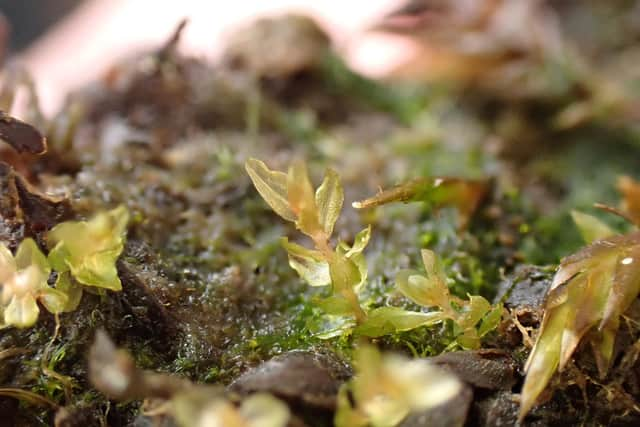Extremely rare moss found outside Edinburgh
A critically endangered moss that lives in mud has been found at a reservoir near Edinburgh.
The round-leaved bryum, one of Scotland’s rarest plants, has made a comeback at Threipmuir Reservoir, near Balerno. It makes the Site of Special Scientific Interest (SSSI) the only site in the UK where this special species of non-flowering plant is found.
Advertisement
Hide AdAdvertisement
Hide AdBryophytes – mosses and liverworts – are in decline across Britain generally. The latest State of Nature Report Scotland, published in September, showed that since 1970, the distributions of 62 per cent of bryophytes have decreased across the UK, compared to 25 per cent that have increased.


It makes the return of the round-leaved bryum, which hasn’t been identified anywhere else in the UK since 1987, apart from at Threipmuir 13 years ago, all the more thrilling for scientists.
NatureScot’s bryophyte adviser Kat O’Brien, who found the special moss, said: “This incredible rediscovery of such a rare and endangered moss in Scotland shows us that there is a whole world of biodiversity that we can only see and appreciate when we take the time to create the best conditions and work to protect nature.
“Despite a number of dedicated bryologists in the UK looking for it, no one has found any round-leaved bryum in decades other than at this site, leading to its classification as a GB Critically Endangered.
"It is likely that this moss is losing sites faster than it is gaining new ones, and is declining on a European scale. The unique habitat it needs only occasionally appears, and it’s a good sign that the conservation work in the area is helping biodiversity.”
The round-leaved bryum prefers to live in areas where other species simply cannot – in the mud. It can be found near reservoirs and lochans when the water levels are temporarily low – a habitat that only appears occasionally.
Although tiny, the moss’s ability to survive in this type of extreme habitat means it has next to no competition from other plants. Human impact has, however, led to the species being under threat, including the stabilisation of water levels and water pollution.
Since 2010, the Threipmuir had been artificially stabilised, therefore removing the round-leaved bryum’s preferred habitat conditions.
Advertisement
Hide AdAdvertisement
Hide AdWorking with bryologists at Royal Botanic Garden Edinburgh, NatureScot has decided to transfer some round leaved bryum to the scientific greenhouses at the garden to build up a population that can be translocated into new sites to improve its critically endangered status.
Handling this complex moss, however, is a waiting game. Scientists might not know for another eight to ten years whether this translocation has in turn been successful.
Scotland has more than 900 species of moss, 40 of which are listed as GB Critically Endangered and Internationally Important. They make up the rich tapestry of Scotland’s biodiversity, but are often underrated.
Some species date back 450 million years, and have survived and thrived through a range of drastic climate changes. There have been mosses known to survive temperature highs of 100C when dried out, and lows of -272C.
Mosses help soak up rainfall, maintain moisture in the soil below, and keep conditions around them humid, which enables other plants around them to thrive, such as in habitats like marshes and woodland. They also play a vital role in the development of new eco-systems.
Comments
Want to join the conversation? Please or to comment on this article.